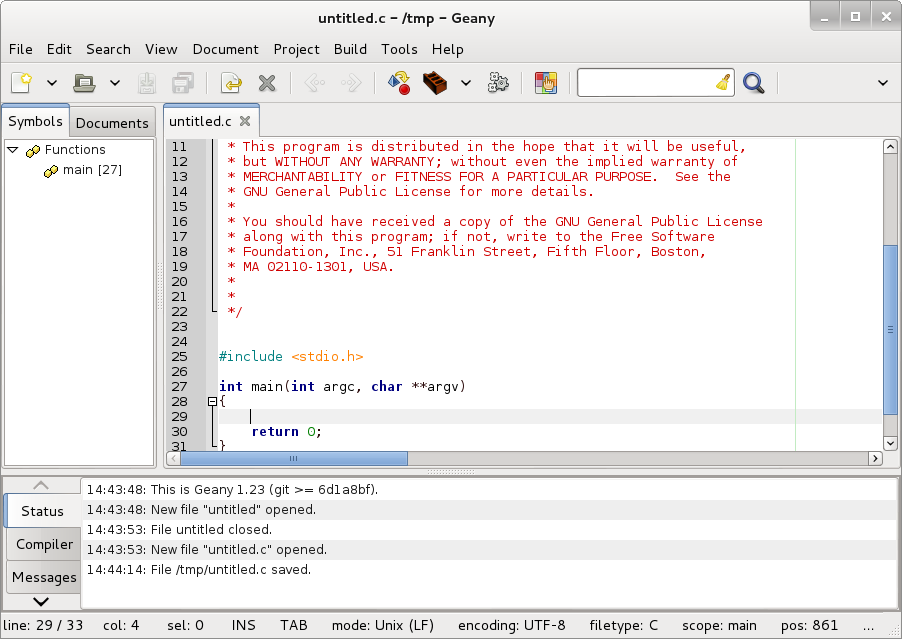

Hit “OK” a few times and close down all windows.In the “Variable Value” you add “ c:\mingw\ c:\mingw\bin c:\mingw\libexec\gcc\mingw32\3.4.5\ ”, be sure that the 3.4.5 is the same as your MinGW version.Look in your “system variables” for “Path“, select it and hit “Edit.” (fig.4).Go to the “Advance”-tab and click on “Environment Variables…”.Under task you click “Advance system settings”, normally you will get a a window like in the screen’s (fig.3).
GEANY TUTORIAL WINDOWS
GEANY TUTORIAL INSTALL
If all went well it will download all the packages and install them, this was the fun part :-)


GEANY TUTORIAL HOW TO
Offcource you can find lots of information how to get it running if you google a little bit, but even then it was hard for me to get it up and running. Even more, after I found one it didn’t really work on its own. This work is licensed under a Creative Commons Attribution 4.I just started to learn C++ and finding a good compiler for windows Vista isn’t as easy as I thought it would be. Identifies candidate gene signatures in response to aflatoxin producing fungus Aspergillus flavus. Genome-wide transcriptome analysis of cotton (Gossypium hirsutum L.) Bedre R, Rajasekaran K, Mangu VR, Timm LE, Bhatnagar D, Baisakh N.Michael Waskom, Olga Botvinnik, Joel Ostblom, Saulius Lukauskas, Paul Hobson, MaozGelbart, … Constantine Evans.In addition to these features, we can also control the label fontsize,įigure size, resolution, figure format, and scale of the heatmaps. Generated heatmaps with Z standardized column and row, hmap ( df = df, zscore = 0, dim = ( 3, 6 ), tickfont = ( 6, 4 )) hmap ( df = df, zscore = 1, dim = ( 3, 6 ), tickfont = ( 6, 4 )) # here I standardize row with Z-score # default Z-score is set to None and it applies to only heatmap with cluster # Z-score can be used to standardize value with mean 0 and var 1 Now plot heatmap with different colormaps, You canįor a detailed understanding of the dataset. Six treatment conditions to A to F for the simplicity of understanding. The X-axis represents the treatment conditions and Y-axis represents the gene names. Generated heatmaps with and without hierarchical clustering by above code, # set parameter show=True, if you want view the image instead of saving hmap ( df = df, rowclus = False, colclus = False, dim = ( 3, 6 ), tickfont = ( 6, 4 )) # heatmaps will be saved in same directory hmap ( df = df, dim = ( 3, 6 ), tickfont = ( 6, 4 )) # heatmap without hierarchical clustering From bioinfokit import analys, visuz # load dataset as pandas dataframeĭf = analys.


 0 kommentar(er)
0 kommentar(er)
